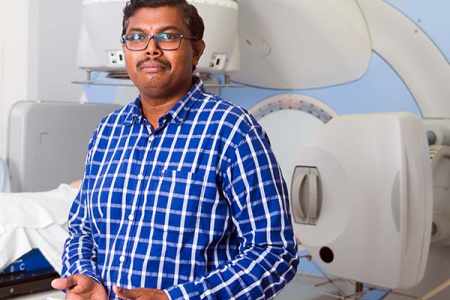Scientist forges ahead with cancer research
A senior clinical scientist at Charles Darwin University says he is excited to continue participating in research that seeks to advance the understanding of genetic biomarkers and their predictive qualities in cancer treatment.
The College of Health and Human Science’s Dr Rama Jayaraj said that specific micro ribonucleic acid (miRNA) molecules provided valuable information in the early detection of cancer, the forecast of an outcome and the likely effects of therapy.
“Our molecular oncology research team has developed a database of effective and potential miRNA biomarkers to assist in the diagnosis, prognosis and theragnosis (the combination of diagnosis and therapeutics) of cancer cases,” Dr Jayaraj said.
“But there is much more to be done in the relatively new area of theragnostic research, and in the development of molecular diagnostic tools.”
Dr Jayaraj has also been active in the competitive world of academic publishing with two co-authored articles appearing in the “Molecular Diagnosis & Therapy” journal in the past six months.
“The first article reviewed the prognostic significance of miRNAs in melanoma patients, and the more recent article discusses the potential of particular miRNAs to serve as indicators of the efficacy of chemotherapy among colorectal patients.”
He is also about to add voice to a specialist discussion about penile cancer, prompted by an article in a recent edition of the highly regarded international medical journal “The Lancet Oncology”.
Dr Jayaraj said that the article described the meta-analysis of multiple studies examining the prevalence of human papillomavirus DNA and the biomarker p16 (a tumour suppressor gene) in penile cancer and penile intraepithelial neoplasms.
“As valuable as the research is, several oncology colleagues and I have written a letter to the editor pointing out that there were aspects of the article that warrant further discussion.
“We have received advice that our submission has been accepted for publication,” Dr Jayaraj said.
“In simple terms, our concerns involved scholarly metrics. We contend that the inclusion of a Tau value would have enriched the study and that the ‘study weight’ and the ‘publication bias’ need to be investigated, before the study can have clinical relevance.
“A report that may be meaningful to a biomedical scientist must undergo proper interpretation before the clinical implications can be understood.”
Dr Jayaraj said he understood that their letter would be published in March.
